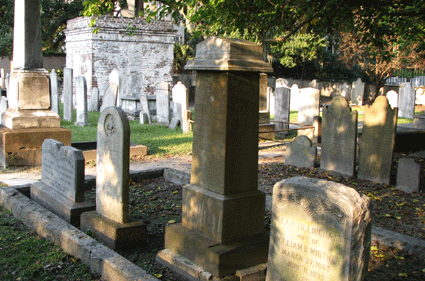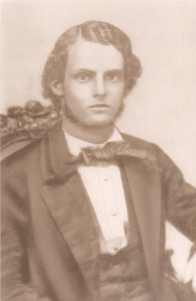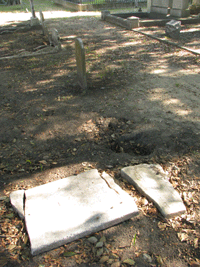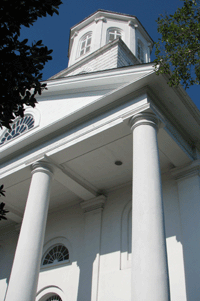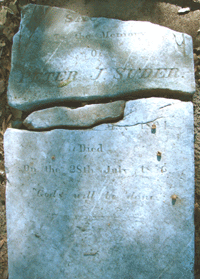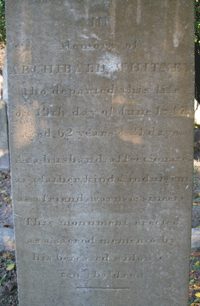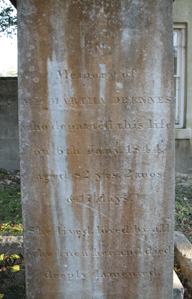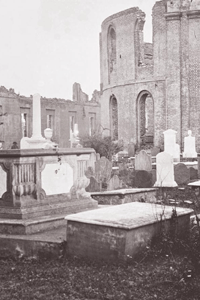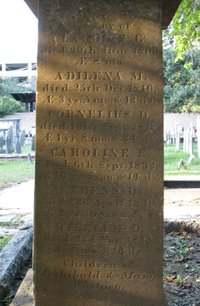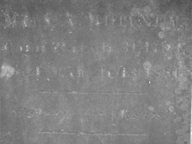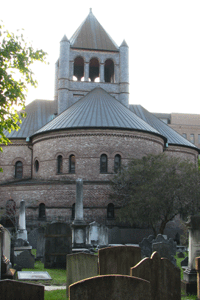|
William Henry Suder, at 24, was already an engineer on the South Carolina Rail Road when he married Elizabeth Skipper in 1859. He was the oldest son in a large Charleston family. He died shortly after the destruction of Northeastern’s depot and the death of his wife when the locomotive he piloted exploded while hauling soldiers to safety.
Peter John Suder, Sr., William Henry’s grandfather, was born around 1770, and married Ann Brown Chalmers in Charleston on 21 October 1799, according to the Charleston Observer. Peter was listed in an 1803 directory of Charleston tradespeople as a shoemaker living at Number 10 Federal Street.
The father of Peter, Sr., may have also been a Peter Suder, known to have come from France. The 1790 census lists Peter Suder, probably a widower, with two boys under 16 and two over 16. He owned six slaves. Peter John Suder, Sr., would fit as one of the sons over 16. The older Peter is listed in The 1794 Charleston Directory as a “segar” maker at 27 Union Street.
Nothing is known about the three daughters of Peter and Ann Suder, but their second son is believed to have been Daniel Suder, born in Charleston in 1809. He died of a spasm on 4 August.1821 at the age of 12 and was buried in the country. Peter’s death is unknown, but Ann died in Charleston in June of 1840.
Peter John Suder, Jr., was born in Charleston on 1 May 1804, and worked in Charleston as a carpenter. He joined the 2nd Presbyterian Church in 1830, and married Elvira Martha Whitney there on 10 November 1832. Together they raised three sons and five daughters. He died on 27 July 1856 of dropsy at the age of 49, and left Elvira with eight children at a time when antagonism over the issue of slavery was coming to a head.
1. Martha Ann Suder, born 28 Aug 1833, died 6 Mar 1916
2. William Henry Suder, born 1834, died February 1865
3. George Young Suder, born 1837, died 2 July 1860
4. Archibald Whitney Suder, born 4 November 1838, died
22 November 1923
5. Elvira Armstrong Suder, born 9 June 1840, died 18 April
1927
6. Mary Ann Whitney Suder, born 1842
7. Alice Elizabeth Suder, born 1845
8. Everleen Eliza L. Suder, born November 1850, died 10
May 1859
Martha Ann married Charles E. Kirk on 23 May 1855, and William Henry, who appears to have been the oldest son; married Elizabeth Kirk Skipper in 1858. Two children died before the start of the Civil War in 1861. Everleen Eliza, the youngest, died in 1858 at the age of eight, while George Young Suder died of Brain Congestion in 1860 at the age of 23. He worked in Charleston as a druggist.
When war broke out, the remaining son, Whitney, and three daughters, Elvira Armstrong, Mary Ann and Alice, were living with Elvira at No. 7 John Street, the original home of Peter Suder. It ran west of Elizabeth Street near Chapel Street where the Wilmington Depot was located. Whitney was a clerk. Based on directory listings, Elvira and her family constantly moved around the city.
Almost nothing is known about the Suders in Charleston during the war, except that they continued to live in the city that grew worse as time wore on. William Henry’s son, William Hugh Suder wrote, “The shrieking, moaning, and at times maniacal cries of humanity - the roaming, trying to find some place of refuge - seemed simply diabolical and inhuman, and the enormity of the suffering can only be fully understood by those who witnessed and endured it.”
Whitney enlisted into Company B of the 15th Battalion of South Carolina Volunteers and defended Charleston before being one of the last units out during the evacuation. His part and recollections of the evacuation of Charleston are not known.
William’s role in the war was to continue as an engineer since the rail road was so important to re-suppy and troop movement. “Our father was absent a goodly part of the time,” remembered William Hugh Suder, “transporting volunteers to join the ranks and fight for their beloved section. So I can speak but little of him.”
William wrote a letter to his sons, telling them why Elizabeth’s sister Caroline Ann Skipper Meyers would raise them until he returned home, but the letter was lost long ago. William Henry never saw his sons again. Sometime between February and May of 1865 (just weeks after Elizabeth died in Charleston) while transporting a regiment of the Southern army to safety, the boiler of William’s engine exploded and took his life.
Two months after the evacuation of Charleston, the war was over. CSA Commander-in-Chief General Robert E. Lee surrendered the main Confederate Army of Virginia to Ulysses S. Grant at the Appomattox courthouse in Virginia.
In 1870, five years after the war ended, William Henry’s brother, Archibald Whitney Suder, was living in Sumter with his family. He married Sophia Rosalie Haynsworth in 1865. In the same year, sister Alice Suder was living in Charleston’s Ward 4 with the family of Real Estate Broker Thad A. Whitney, Alice’s uncle. Nothing more is known of Alice or sister Mary Ann.
Elvira died in 1892 at the age of 80, and was buried with her husband, but her marker does not remain. It is not known if the sons of William Henry and Elizabeth Skipper Suder ever knew their grandmother after the death of their parents. William Hugh never wrote about her.
Elvira and Peter J. Suder were both buried in the cemetery of Charleston’s Second Presbyterian Church, which Peter joined in January 1830 and where he married Elvira in 1832. Elvira’s parents, Archibald and Mary Drennes Whitney, are buried in the Whitney family plot located in the cemetery of the Circular Congregational Church on Meeting Street. Archibald and Mary Drennes Whitney had a very large family, sixteen children in all, and many who died young are memorialized in this plot.
|
